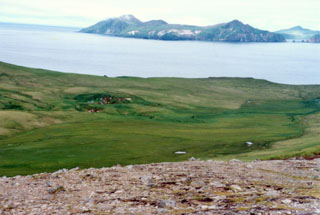Report on Davidof (United States) — 2 February-8 February 2022
Smithsonian Institution / US Geological Survey
Weekly Volcanic Activity Report, 2 February-8 February 2022
Managing Editor: Sally Sennert.
Please cite this report as:
Global Volcanism Program, 2022. Report on Davidof (United States) (Sennert, S, ed.). Weekly Volcanic Activity Report, 2 February-8 February 2022. Smithsonian Institution and US Geological Survey.
Davidof
United States
51.97°N, 178.33°E; summit elev. 328 m
All times are local (unless otherwise noted)
An earthquake swarm, either related to tectonic processes or volcanic unrest, began in the vicinity of Davidof on 24 January. The swarm continued at low levels during 1-8 February with daily small earthquakes. The Aviation Color Code remained at Yellow and the Volcano Alert Level remained at Advisory.
Geological Summary. A cluster of small islands between Segula and Little Sitkin in the western Aleutians, the largest of which is Davidof, are remnants of a stratovolcano that collapsed during the late Tertiary, forming a 2.7-km-wide caldera. The islands include Khvostof, Pyramid, Lopy, and Davidof; the latter three form the eastern rim of the mostly submarine caldera, sometimes referred to as the "Aleutian Krakatau." The islands were constructed above a roughly 100-m-deep submarine platform extending NW to Segula Island; the floor of the caldera lies 80 m below sea level. The islands are vegetated, but lava flows are recognizable, and Smith et al. (1978) suggested a possible Holocene age.
Source: US Geological Survey Alaska Volcano Observatory (AVO)

